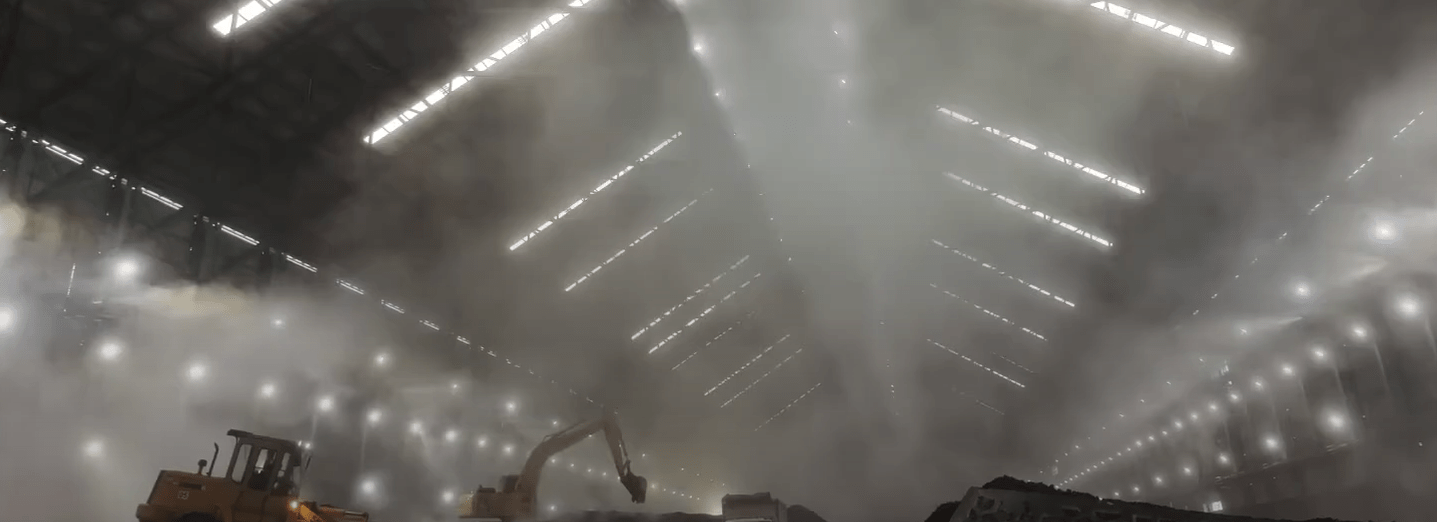How much impact can a lower humidity level have?
A low or unsuitable humidity level can have a serious impact on your health or business. Each industry has an optimal level of relative humidity to reach in order to run their operation smoothly.
When the air gets dry due to the lack of humidity, not only does it affect human health and comfort, but it also has various adverse effects such as a decrease in production efficiency and deterioration of the quality of goods.
Consequences:
- Virus spread
- Skin and hair
- Food preservation
- Static electricity
Virus spread
When the air gets dry, the respiratory membranes of the mouth and nose dry up, and the protection function against infections such as cold decreases.
Therefore, viruses such as cold and flu can easily enter the body. One of the major causes of colds and flu in winter is not only the increase in pathogens, but also the loss of human defenses due to air dryness.
In addition, because the amount of water that evaporates from the body increases as the air dries, the sensational temperature decreases even if heating is applied. That is why it is difficult to feel the warmth even if the heating temperature is set high.
Skin and hair
Insufficient humidity affects not only health but also beauty such as hair and skin.
The moisture content of healthy hair is approximately 11-13%. Hair has high moisture absorption and release, and when it is dry it will spread more easily.
In addition, with regard to the skin, as it is often said that “moisturizing is important”, when the water content is less than 10%, it becomes a state called dry skin, causing rough skin and itching.
Preservation of food
A lack of humidity will cause vegetables to dry out and reduce their weight. Vegetables contain about 90% of water, and if they loose 5% of water, their freshness and quality will deteriorate and their commercial value will be lost. It will also have an impact on their shelf life and time in the fridge.
Factory and computer room
When the air is dry, the surface of the object is dry and electricity is less likely to flow. Insufficient humidity causes static electricity to build up, causing unpleasant shocks.
The generated static electricity can cause dust adhesion, paper jams in printing machines and photocopiers, fiber entrapment, malfunction of computers, and machine failure.
In the worst case, the build-up of static electricity can lead to explosions or fire.
Proper humidity
Humidification is needed to maintain product quality and production operation. The appropriate humidity depends according to the purpose, but in most cases it is said to be 40 to 60% RH. This is described as the comfort zone.
If the humidity is insufficient, below the comfort zone, various problems will occur as described above.
For example, influenza virus depends on the temperature in the room. However, if the humidity is 50% or more, it can drastically reduced the proliferation of viruses. Therefore, adjusting the humidity between 40 and 60% will prevent infection.
Also, if the humidity gets too high, it will cause mold and ticks which will develop food decay, break up pillars and building materials.
You can easily adjust the humidity by installing a humidifier adapted for your environment. The introduction of a humidifier is effective for maintaining the proper humidity and creating a comfortable air environment.
Read more about humidity control in our other posts below:
Related articles
Stay updated: Ikeuchi news & insights
"*" indicates required fields
Get expert advice:
contact us today
Would you like to know what Ikeuchi can do for your organization? We’re happy to discuss your needs and show how we can solve your challenges. You’ll receive a response from us within 24 hours!
"*" indicates required fields
Call us: +31 (0) 20 820 2175
- Global presence and experience
- The number 1 nozzle manufacturer in Japan
- Japanese Precision Technology
“High quality nozzles. Friendly and helpful customer service”
“With Ikeuchi spray nozzles we are able to save costs as we don’t need to replace them so often as before.”
“When it is about nozzle technology, IKEUCHI are the experts. We always highly appreciated their knowhow and their extremely wide range of nozzles, not to mention their unrivalled AKIMist humidifier”
“When it is about nozzle technology, IKEUCHI are the experts. ”




